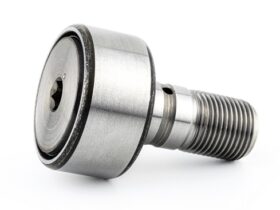Ever thought about your sewer lines? Probably not, unless they stop working. It’s easy to take these underground heroes for granted while they quietly, invisibly serve our homes. But when trouble starts brewing beneath the earth’s surface, it demands our attention. Often, traditional methods of sewer repair can be invasive and harmful to the environment. But is there an eco-friendly solution to this problem? As keepers of the earth, shouldn’t we be looking for greener alternatives in every aspect of our lives, including sewer line repairs? This article aims to shed light on the eco-friendly approaches to sewer line repair, a topic whose importance is often underestimated, yet forms the backbone of our daily sanitation needs.
In recent years, we’ve seen an environmental-friendly revolution in home improvement and maintenance. Advances in plumbing technology have made it possible to repair sewer lines without destroying our landscapes or causing undue harm to the environment. But what exactly are these eco-friendly sewer line repair alternatives? And how do they compare to traditional repair methods in terms of cost, time, and effectiveness? Let’s delve deep to unravel these mysteries.
Addressing these questions, this article will explore various aspects of eco-friendly sewer line repair. We will walk you through various innovative technologies and techniques that are environmentally friendly and compare them with the conventional repair methods. By the end of our exploration, you’ll have a clear understanding of this exciting green revolution in sewer line repair.
The Need for an Eco-Friendly Approach
For years, traditional sewer repair operations have been notorious for their destructive nature. Digging up large tracts of land, tearing through landscaping, and disturbing local wildlife are all part of the package. Such methods not only spoil the aesthetic beauty of our surroundings but also have a significant environmental impact. However, the arrival of eco-friendly sewer line repair techniques provides a much-needed respite.
Eco-friendly sewer line repairs go well with the worldwide trend of valuing environmental sustainability over short-term expediency. Turning a blind eye toward environmental impact is no longer viable. Furthermore, consumers, more than ever, are inclined to use services that prioritize environmental safety.
In addition, these green technologies often promise blessing in disguise – they tend to save time and cost in comparison to traditional methods. The damage to surrounding infrastructure due to digging is minimized or eliminated, which directly translates to lower costs. Also, the repair time is usually reduced which leads to less disruption for the home-owners.
Understanding Trenchless Technology
Trenchless technology is at the forefront of the eco-friendly approach to sewer line repair. The technique effectively repairs sewer lines without the need for extensive digging. It involves creating small access points to the sewer line and using a resin-saturated felt tube made from a suitable flexible material that is inverted or pulled into the damaged pipe.
The benefits of trenchless technology are manyfold. Firstly, it significantly reduces the negative environmental impact as it avoids extensive digging. Secondly, it is less disruptive as it causes minimal interruption to homeowners and neighborhood. Last but not least, it provides a durable solution, with repaired pipes having a lifespan of up to fifty years.

Pros and Cons of Eco-friendly Sewer Line Repair
Every solution comes with its own set of pros and cons, and eco-friendly sewer line repairs are no different. The benefits include minimal disruption, a shorter repair time, cost-effectiveness, and, most importantly, being environmentally friendly. However, it may not be suitable for all situations. For instance, in case of severe pipe damage or collapse, traditional replacement might be the only option.
Impact on Home Value
Eco-friendly repair increases the value of your home by ensuring buyers that the sewer system is in excellent condition and is of low environmental impact. Such factors often appeal to modern buyers who prioritize environmental ethics and sustainability.
Involvement of the Community
Local communities can play a significant role in the adoption and promotion of eco-friendly sewer line repair technologies. Community organizations and local councils can educate homeowners about the benefits of these methods, and how they contribute to maintaining a healthier environment.
Professional Help for Eco-friendly Sewer Repairs
It’s crucial to choose the right professionals for your eco-friendly sewer line repairs. Experienced and knowledgeable technicians will expertly facilitate this green revolution in your home sewer line system, ensuring that all work is completed efficiently and with least environmental impact.
Harnessing the Power of Green: Conclusion
Navigating through the intricacies of sewer line repair may not be everyone’s cup of tea. But as homeowners and environmentally-conscious individuals, it’s crucial to understand the implications of our choices. By adopting eco-friendly ways like trenchless technology, we can eliminate the destructive impact of traditional sewer repair methods and enjoy equally durable solutions.
The eco-friendly approach also saves money and time while providing peace of mind that we’re not causing undue harm to the environment. However, to make the most out of these methods, it’s essential to partner with a trustworthy and professional service provider who has the necessary knowledge and expertise in green technologies.
The time for the green revolution in sewer line repair is here. It requires a collective effort from homeowners, communities, professionals, and local councils. With concerted efforts, eco-friendly sewer line repair can become the new norm, reserving traditional methods for only when absolutely necessary. In the long run, not only will this benefit the environment but the health of our communities, and ultimately, our planet too. With so much at stakes, can we afford to ignore this green revolution?








Find Us on Socials